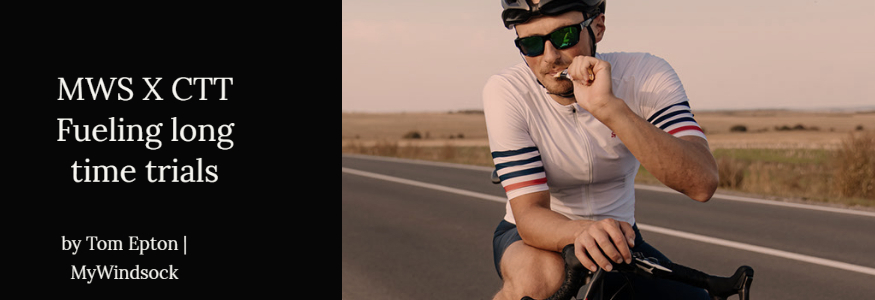
Summer is around the corner and time trials are getting longer! The early season is here, February open tens are turning to fifteen miles and beyond. Before you know it, you’ll be on the startline of a hundred mile time trial wishing you’d done more training! Luckily for you, a significant component of these longer time trials is the amount of food you’re able to eat during them! If you can eat, you can go fast.
Figuring out how much to eat, and how to get it down you, is half the puzzle. Here we are going to use myWindsock to plan our nutrition on a 125km time trial. Fueling comes down to two things - energy in vs energy out. For a time trial, even a long one, the bulk of our energy comes from the breaking down of lactate - something you can find more about here.
When we use our glycolytic system to break down glucose into energy, after about two hours of going hard - we run out of glucose. There’s a long known relationship between the amount of fuel we can consume and the performance we are able to produce in long events. The main limiter is the amount that can be consumed. Previously, it was thought that 60g of carbohydrate (roughly one cup of rice) was the maximum amount that could be consumed hourly but recent breakthroughs in performance nutrition have allowed athletes to consume upward of 90g per hour.
In order to plan our fueling, the first step is to figure out how long our event will take us. This is where an app with the predictive power of myWindsock comes in handy. There are no long time trials at the moment, to be honest it’s probably a bit chilly - so I decided to use a loop I completed in training last summer.
It’s quite an involved loop that’s 124.8km in length and has 1288m of elevation. This would probably be a rolling, sporting course in the British time trial scene - consider it similar to a ten (obviously longer) with 160m of climbing, not hilly but not flat either!
In order to figure out how to fuel a long time trial (or training ride) on this course, we need two pieces of information. Firstly, how long is it likely to take us and secondly, how much carbohydrate can we consume for this duration without stomach issues rearing their head. For the second of these, you’ll have to do some testing yourself and then some stomach training. In long events (anything from a fifty mile TT and up) your ability to fuel will be a key determinant of performance.
In order to plan how much we are going to eat, we need to predict how long our race will take.
Tips for getting an accurate prediction
- Use numbers from testing - myWindsock allows you to do aero field testing. Alternatively, you can use your cda as measured in a wind tunnel or by an aero meter.
- In the absence of test data, take an average of estimated cda values from your races where you’ve used the same (or similar) set up. You can get these by uploading your ride into myWindsock.
Once you’ve plugged in your numbers, you’ll get a time estimate from myWindsock - which for this course with all of my numbers is 2 hours and 53 minutes. If we round this to 2:45 and use the fact that I can consume 120g of carbs per hour, this means I need a total of 330g of carbohydrates for the race (the equivalent of roughly ten gels). This means I can make a nutrition plan based on what I’m able to carry (and consume) in terms of gels, chews and sports-drink. myWindsock has given me the confidence to not only plan my pacing according to the weather (a topic worthy of a blog in its own right) but has also told me what fuel I need to get through it to the best of my ability. An accurate prediction of duration is all you need to plan intensity and fueling - if you’re racing long time trials this year, planning with the assistance of myWindsock is vital.
